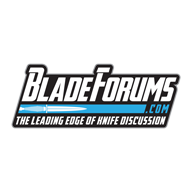- Joined
- Nov 23, 2013
- Messages
- 306
As I have been working on my brush chopper build, I've been having fits with getting forge welds to stick. I've never had much trouble before, and the only changes that I can pinpoint are the size of my billet (not that big, but bigger than I've ever done before) and a reworking I did of my forge burner to put out more heat. I'm using 15N20. So, is it possible to get a billet too hot (but before sparkler stage) to weld? I've tried dry welds, kerosene welds, and borax fluxed welds. All attempts have been made in a reducing forge atmosphere. All of those methods have had roughly the same results, about a 1/3 chance of sticking. Something I have noticed is that my borax often looks a bit crispy and bubbly just before welding. Am I doing something wrong, or is this just part of the learning curve on welding larger billets?

